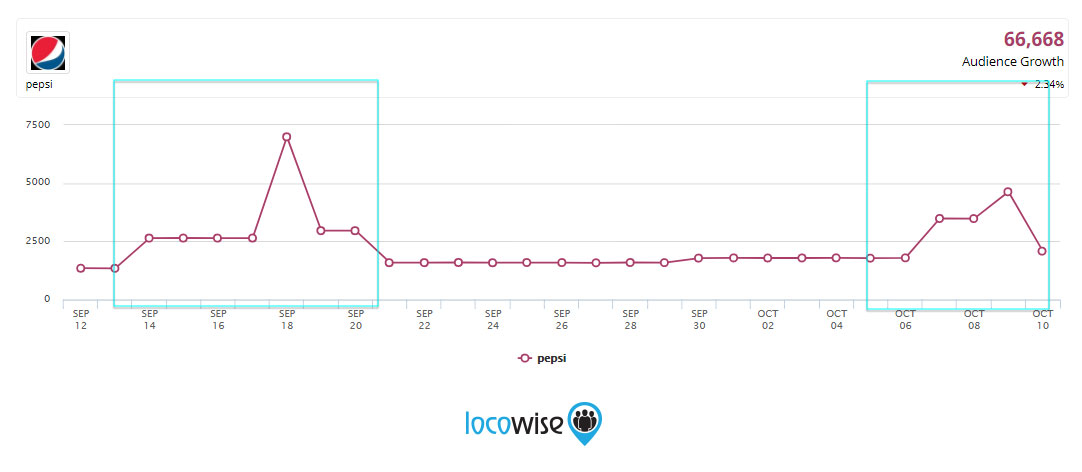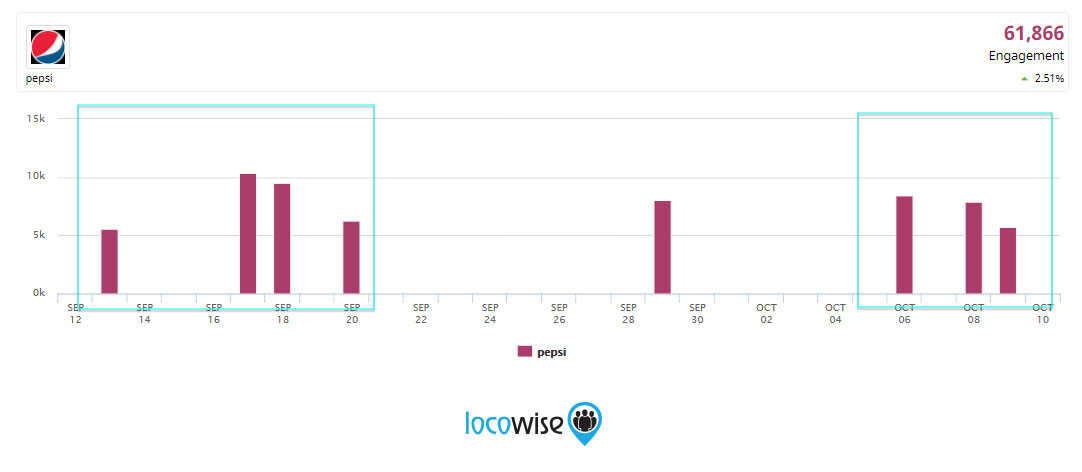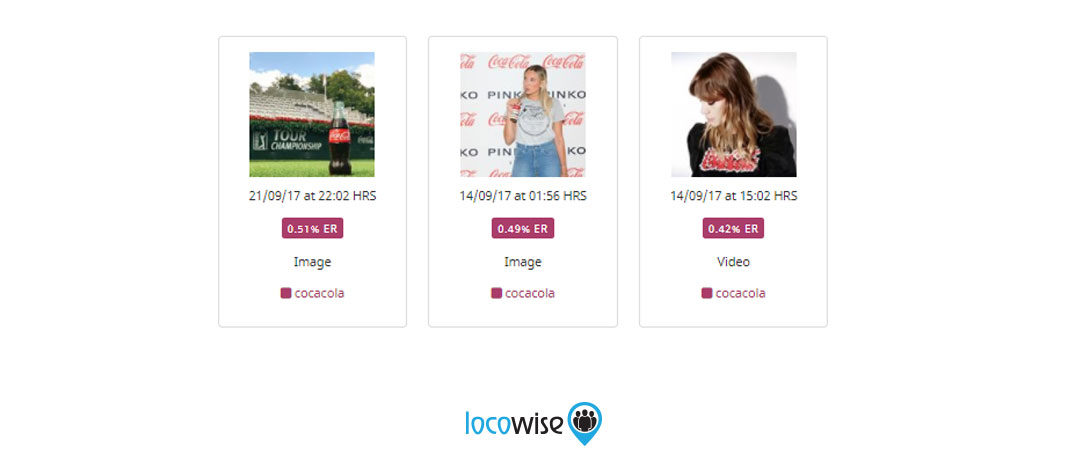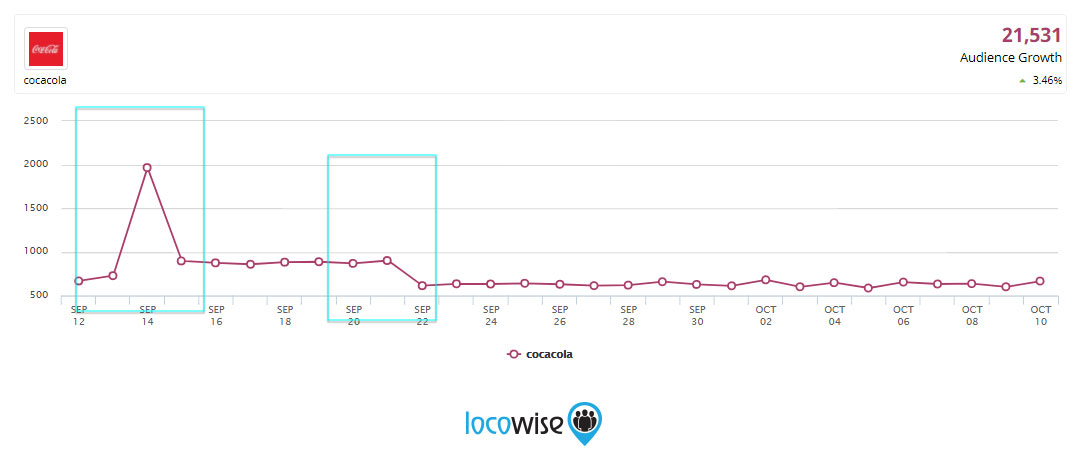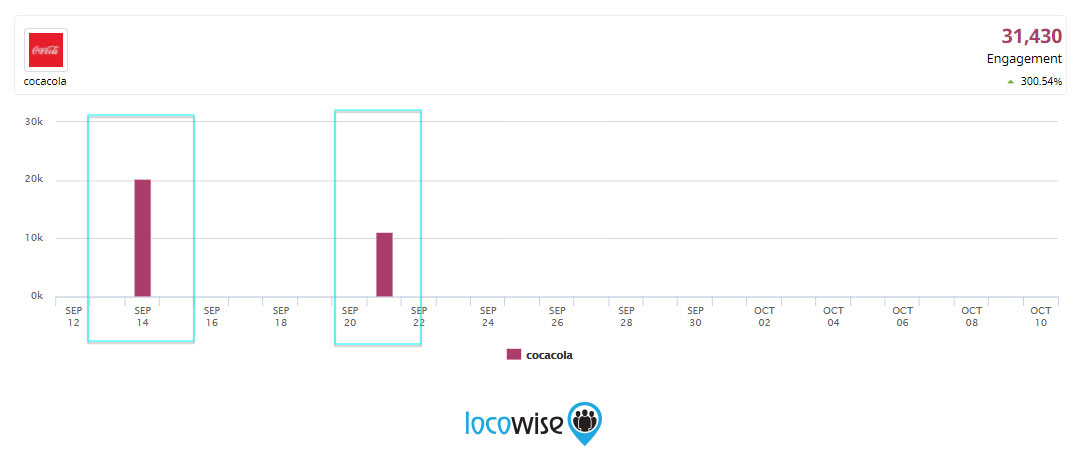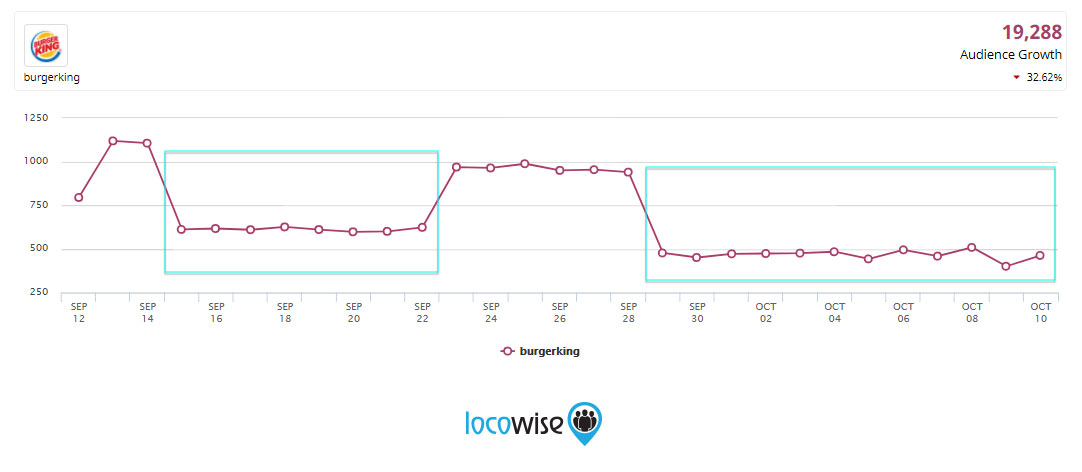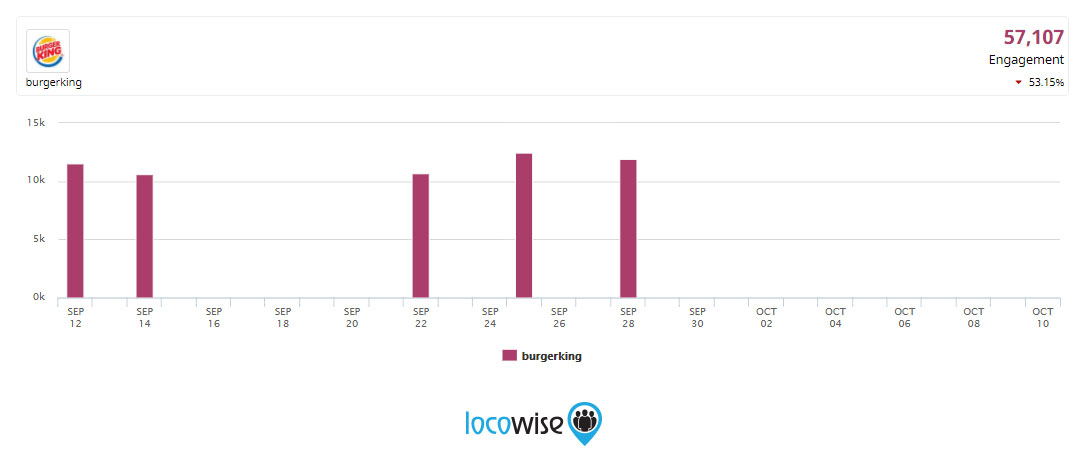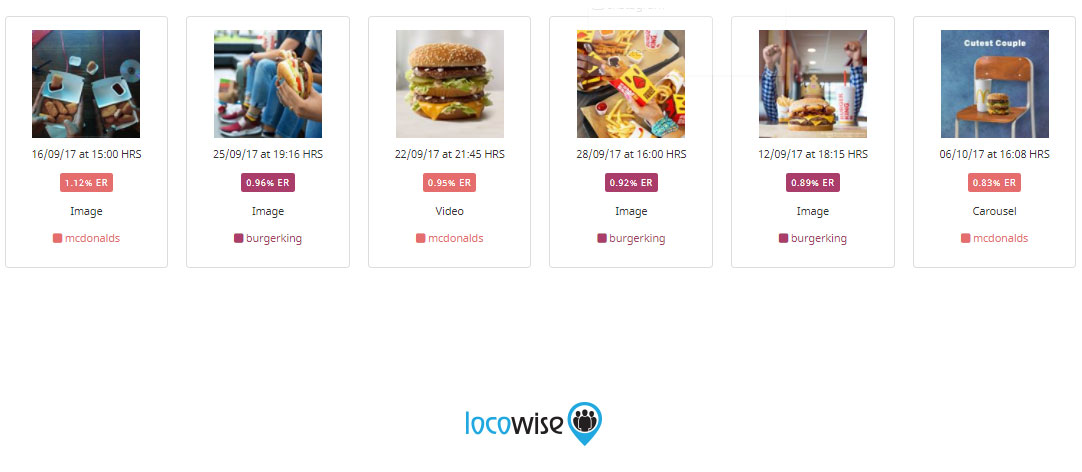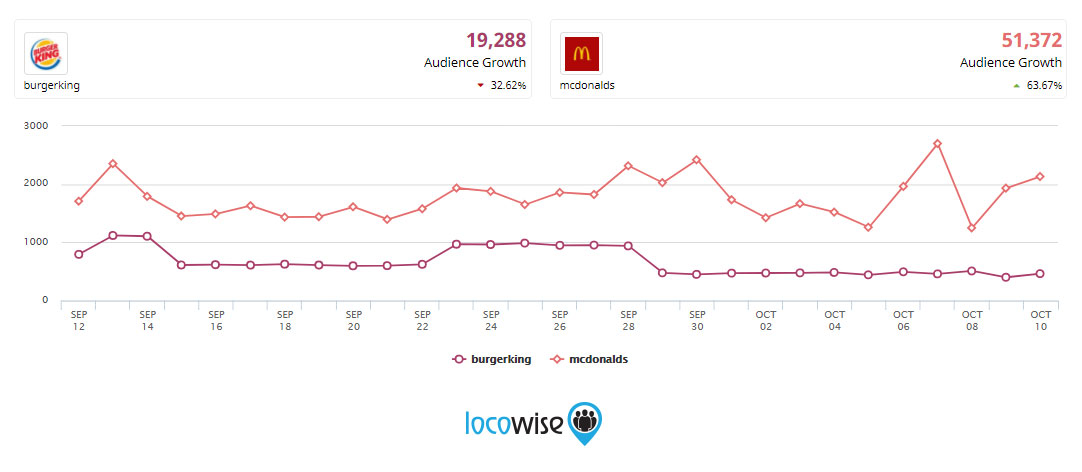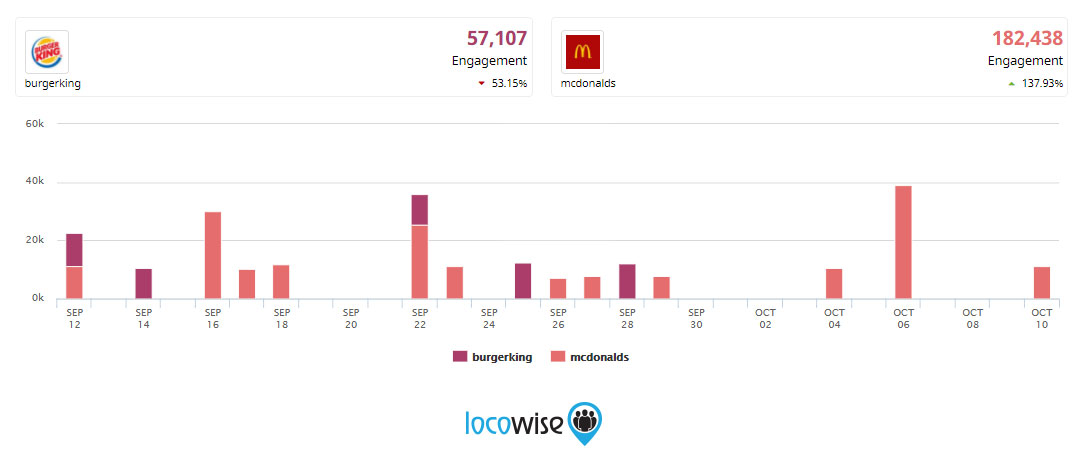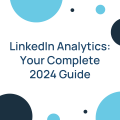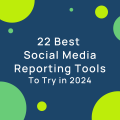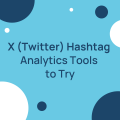From Coca-Cola To Burger King: Top Food & Beverage Brands On Instagram
Ivan Ivanov posted on 8 November 2017
Good artists copy, great artists steal. Of course, the quote shouldn’t be taken at face value when it comes to content as copyright infringement and plagiarism are unlawful. Yet, no one can stop you from checking out the social media strategies of the best performing brands in your industry and using what works. To paraphrase, you should learn from the best.
Whether you are interested out of curiosity or because you want to run a campaign on Instagram related to the food & beverage industry, we have some good news. This week, as part of our ongoing examination of the best social media strategies on the photo sharing platform, we decided to analyze the top food & beverage brands on Instagram.

What inspired us was the fact that even luxury tech brands tend to post photos and videos of food and beverages to be more relatable and engaging. It’s not a surprise to anyone that a huge portion of Instagram content is photos of meals. This has been a running gag online since the rise of the platform a couple of years back.
But does the popularity of food and beverage content help or hurt brands in that specific industry? Let’s analyze and hopefully inspire you along the way.
As always, we will take a look at the five pillars that make up a proper Instagram social media marketing campaign. Here’s a quick recap of what we are looking for, before diving into the analytics, insights and analysis.
- Visual Flow Consistency – Instagram is a platform that strives on visual appeal. Quality photos that achieve a coherent flow and consistency throughout a brand profile appear more professional to the audience.
- Industry Relevancy – The content you post on the photo sharing platform should be relevant both to the industry you are in and to other marketing campaigns your brand runs outside of Instagram.
- Engagement Insight – How much does a brand care about its analytics? Allowing you to get a better grasp on the appropriate times at which you should post, insights can also help you better adapt your content towards your audience.
- Audience Relatability – A proper Instagram marketing campaign should also include posts that are relatable to a brand’s specific audience. Whether that would be general posts about the difficulty of workdays, such as Monday, or something else, relatable posts can help you boost your engagement.
- Overall Strategy – Last, but not least, we also take into account the overall marketing strategy for Instagram of a brand. This includes the coherence between the aforementioned four points, as well as additional factors, such as hashtag use, user generated content and more.
Now that we’ve set the criteria by which we analyze the analytics and the Instagram marketing strategies of the brands, let’s get into some successful and some less successful food and beverage brands and how they perform on the platform.
Pepsi
Starting with Pepsi, we can immediately see a coherent visual flow strategy. To start off, the posts shared by the brand, even though usually days apart, seem to be paired by two visually.
The coherence of colors between the top left and center, for example, is as obvious as the consistency between the bottom right and center one. But even though the images come in pairs, an overall consistency in the style of the posts can be seen throughout.
Much like a number of other popular brands, Pepsi decided to go with the product placement approach. This gives the brand flexibility in the idea and creative department. For example, by not focusing on the product itself, they can create relatable imagery, such as the pizza post, or simply go for a model pic.
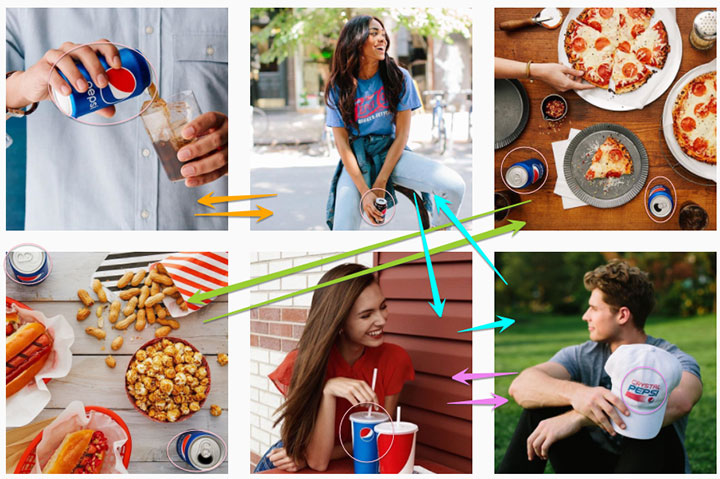
The analytics also show consistency. The brand has managed to achieve an overall engagement rate of 0.71% during the last month. While the difference between the most and least engaged with posts is almost double at near 0.50%, the ER of the top and second best post is less than 0.10% apart.
Nevertheless, Pepsi doesn’t seem to be eager to realize the full potential of its Instagram campaign. The fact that the posting times and the number of posts for a monthly period is not enough is obvious. As seen, the brand’s audience growth skyrockets with the bumps in the engagement that come with each new post.
Coca-Cola
Coca-Cola is a brand that has single handedly created the visual idea of modern day Santa back in the early 20th century. Recognized globally for its creative marketing, we were quite shocked to see its online presence on Instagram.
To start off, there isn’t any visual coherence between the images. And even if we disregard this fact, the brand focuses on product images almost as much as it does on product placement.
Even though the fact that Coca-Cola is recognized worldwide and the product speaks for itself, there is a total lack of relatability within the photos. In addition, the only recent relatable post, for the solar eclipse, didn’t fit its overall visual brand consistency.
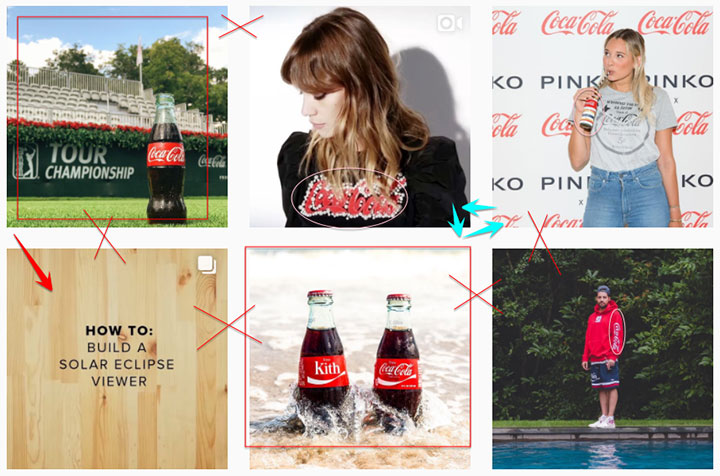
The analytics paint a similar picture. Coca-Cola does have an advantage in followers compared to Pepsi. Yet, despite holding a much bigger real world market than its competitors, the brand underperforms with a lower than 0.43% overall ER.
The famous soda drink posts even less than Pepsi. And unsurprisingly, we can also see that the brand misses out on its potential audience growth as the engagement bumps correspond to the audience growth bumps that are directly related to each post shared by the brand in that period.
Burger King
Burger King is yet another brand that focuses on direct product images. In fact, five out of the six most recent posts from the fast food company are almost one and the same. This doesn’t give the brand much flexibility throughout the posts and while there is a level of visual flow consistency, the images are not unique in their own right.
Nevertheless, Burger King does show an ER score that is consistent and even higher than Coca-Cola. Averaging at 0.88% for the previous period, the brand does seem to attract the attention of its audience. Part of the reason for this might be the food aspect. While Coca-Cola is a popular drink, food is generally more enticing for an audience on Instagram and it seems like the numbers also show that.
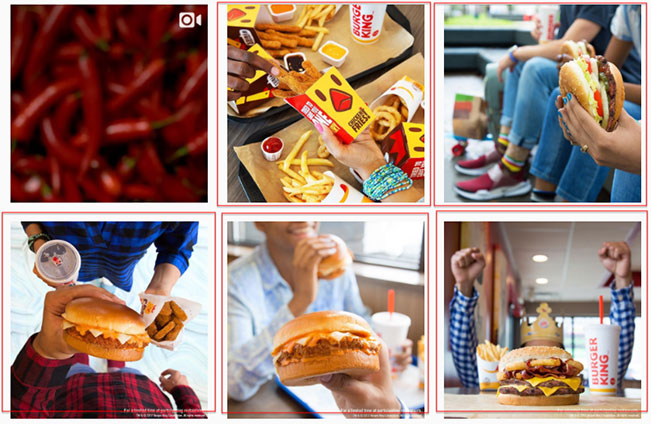
What’s interesting is that even though with Burger King we can see the same lack of consistency in posting and the audience growth bumps, the brand does manage to achieve steady growth after each post. Our advice would be to focus on a few strong posts per month which are posted on more exact intervals so that the steady audience growth is even higher.
McDonald’s
Looking at McDonald’s, you can instantly see a colorful posting pattern with amazing visual flow consistency. Not only are their product shots creative, but they also include relevant audience engaging and relatable notions.
As it can be clearly seen from their six recent posts, the brand manages to present a beautiful overview of an Instagram profile that fits almost all the pillars of what a marketing campaign on the platform should be. But what do the numbers show?
Unsurprisingly, McDonald’s holds the spot for most engaging post compared to Burger King. But with the latter receiving a higher average ER (0.88% compared to Mc’s 0.52%), we can receive a glimpse at which content strategy is better.

And if you are wondering whether posting regularly has an impact, when almost always the average ER drops, the overall audience engagement and audience growth charts paint a clear picture.
Even though most of McDonald’s posts receive lower engagement than those from Burger King, due to their consistency in the posting schedule, the brand receives a much higher audience growth rate. Of course, this is also related to the size of the audience of both brands, but the chart is still pretty telling.
What can you take from these insights?
The most surprising insight we received from analyzing the top food and beverage brands on Instagram is that knowing when to post can significantly impact your audience growth. In fact, out of the four brands, only McDonald’s actually took advantage of regular posting, while all others have rather inconsistent and irregular schedules, posing only a few times per a period of one month.
What’s more, we also learned that when it comes to food and beverages, sometimes product shots can be better than relatable imagery, but only if they are done right. And last, but not least, it is obvious that checking your analytics every one and a while can have a huge impact on your marketing strategy and can give you insights on how to move forward.
Want to see your analytics or the ones of your competitors on Instagram, Facebook, Twitter or more? Sign up for a free 7-day trial of Locowise today!


